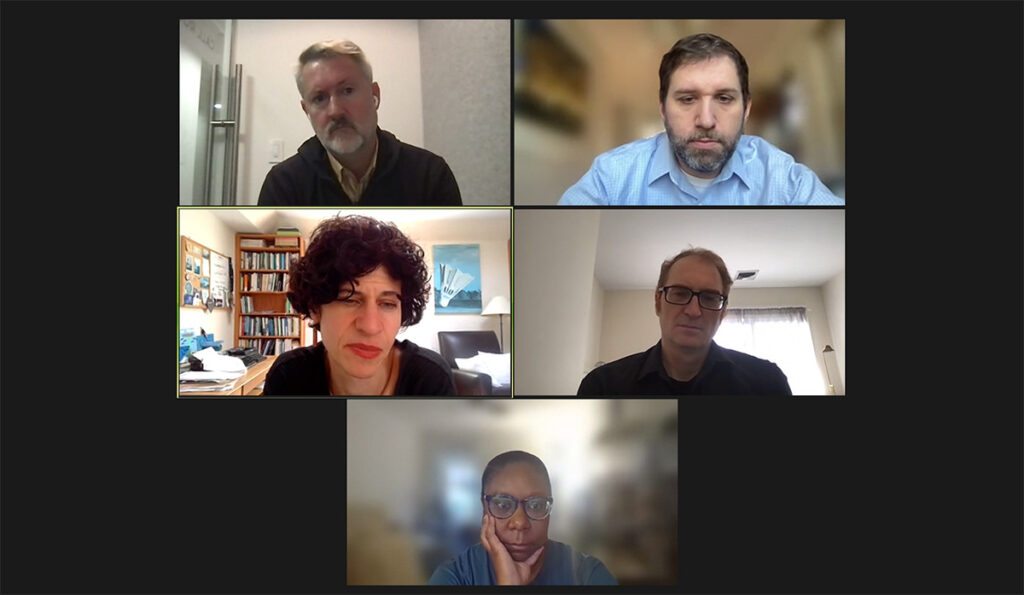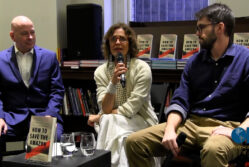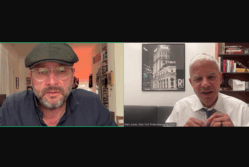Archive Event Highlight

Journalists Share Techniques to Engage Audiences on Climate Change

Clockwise from upper left: Steve Sapienza, Zachary Goldfarb, Peter Prengaman, Kendra Pierre-Louis and Juliet Eilperin.
by Chad Bouchard
Veteran climate reporters at an OPC panel on Nov. 2 shared key techniques for avoiding “climate fatigue” among readers and audiences. This year’s climate news has included wildfires in Maui, record-breaking heatwaves, historically low ice coverage in the Antarctic, and wildfire smoke from Canada that choked states across the eastern U.S.
Panelists told the online audience that good writing, humor, and angles scaled to the local level and focused on human narratives help readers engage with the reporting.
Peter Prengaman, news director of The Associated Press’ climate and environmental team, said highlighting solutions helps prevent readers from feeling overwhelmed.
“Solutions journalism has been around for a long time, climate solutions have been around for a long time, but I think we see in our readers much more interest in stories that get at how some of this can be abated.”
Juliet Eilperin, deputy climate and environment editor at The Washington Post, said readers are also drawn to smaller-scale stories about adaptation, like how to prepare for a wildfire or how to stay cool in extreme heat. She said the Post conducted polls about how people’s attitudes have changed this summer in light of climate disasters, and found that awareness hadn’t shifted very dramatically, with some exceptions.
“People were aware of wildfire smoke in a way they hadn’t been before. That was one of the most tangible manifestations of climate change that we’ve seen in North America, just as we’ve seen record warmth and other impacts across the globe.”
During the program, moderator Zachary Goldfarb, climate and environment editor at The Washington Post, asked the panelists how to keep audiences surprised in a beat that covers such slow-moving impacts and global trends, and how to prevent stories from becoming “just a constant downer.”
“You can use humor, you can use evocative details, you can use wordplay,” said Kendra Pierre-Louis, climate reporter with Bloomberg. “There are all sorts of things you can do that are just traditional writing and journalism techniques to keep readers engaged.”
She said it is helpful to focus on unique and interesting details about climate change to highlight novelty and new information.
“With climate stories, I often feel it’s like ‘taking your medicine,’ and we want it to feel different than that. We want people to want to read your story as opposed to feeling obligated to read just so they’ll be well informed.”
Steve Sapienza, senior editor at the Pulitzer Center, said partnerships with local newsrooms are often the best way to find impactful stories because they best understand how their audience will relate to or engage with those climate topics.
He cited an example of local reporting supported by the Pulitzer Center in North Carolina, that examined how climate change was affecting local fisheries, including sport fishermen, “a whole new audience of people who might not have thought about how climate is impacting their recreation.”
The panelists discussed some of their favorite projects on climate change in recent years, including The Washington Post’s “Unearthing the Future” series looking at Earth’s primordial climate story; an AP collaboration with the Press Trust of India that produced seven climate stories; and Bloomberg’s investigation into the resurgence of wood as a building material.
“Some of the mistakes of climate journalism of, say, ten years ago, was that it was too focused on the science and not enough on the people,” Prengaman said. “Not just people having impacts, but just people as characters.”
Click the window below to watch a playlist of video clips from the program.



